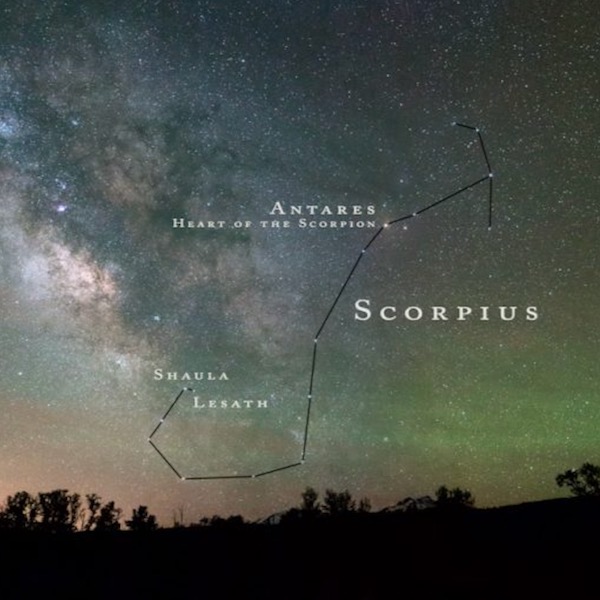
Scorpius and the Scorpion’s Stinger stars
The zodiacal constellation Scorpius the Scorpion is one of the few constellations that looks like its name. That’s because it’s a graceful, J-shaped pattern of stars resembling a real scorpion’s curved tail. And at the end of this graceful line of stars are two stars noticeable for their nearness to each other. They are Shaula and Lesath, which represent the Scorpion’s Stinger stars. It’s fun to see the curved tail of Scorpius. And Shaula and Lesath make a perfect celestial Stinger!
Although, Shaula and Lesath appear close together, they’re only close along our line of sight. In reality, these two stars are separated by about five light-years.
Shaula, the second-brightest star in the constellation Scorpius, is a triple star system and shines at 1.62 magnitude.
Lesath, the fainter star of the Stinger pair, doesn’t have any known companions, so far. It shines at 2.7 magnitudes.
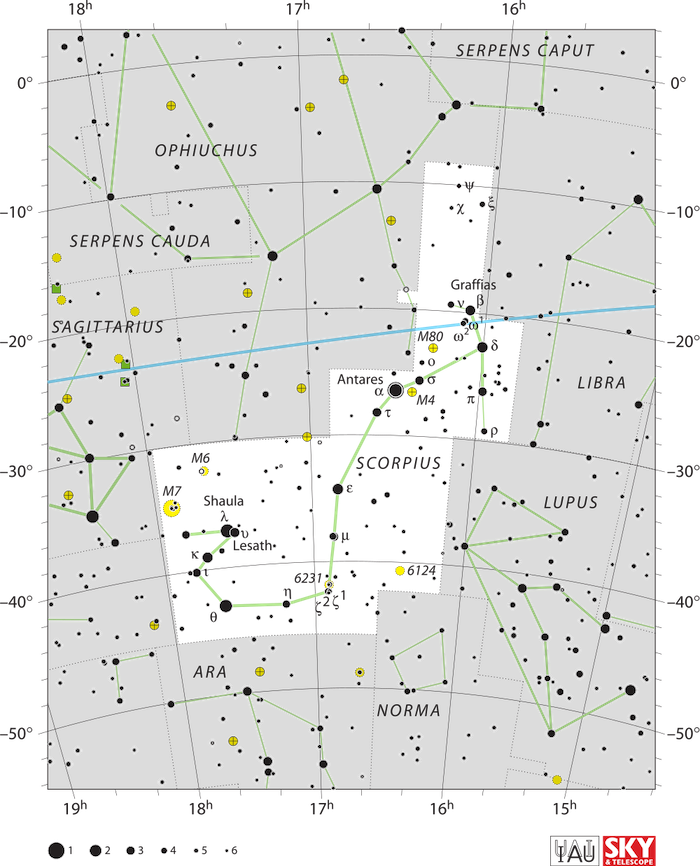
How to see Shaula and Lesath.
The best time to see Scorpius and its stinger stars in the evening sky is during the Northern Hemisphere summer and early autumn. Meanwhile, in the Southern Hemisphere, these stars are a feature of winter and spring.
Shaula is the second-brightest star in the constellation Scorpius, after Antares. Plus, Shaula is also the 24th brightest star in the sky. But it’s hard to think of Shaula without Lesath. These two stars are very noticeable on the sky’s dome – glittering together brighter than most other stars, and conspicuously located in an easy-to-see constellation.
From the Northern Hemisphere, Scorpius will be in your southern sky; in that case, Shaula is the star on the left. Shaula is also the brighter of the two stars. These two noticeable stars are sometimes referred to as the Stinger of Scorpius, and sometimes as the Cat’s Eyes.
At mid-northern latitudes, Lesath and Shaula never climb very high in the sky. They are highest in the sky when they’re due south. Even then, from the northern U.S., Scorpius’ stinger stars are barely a fist-width above your horizon (hold your fist an arm’s length away). They are higher in the sky as seen from the southern U.S., where Scorpius becomes a glorious sight. And from the Southern Hemisphere, all of Scorpius prominently arcs high overhead.
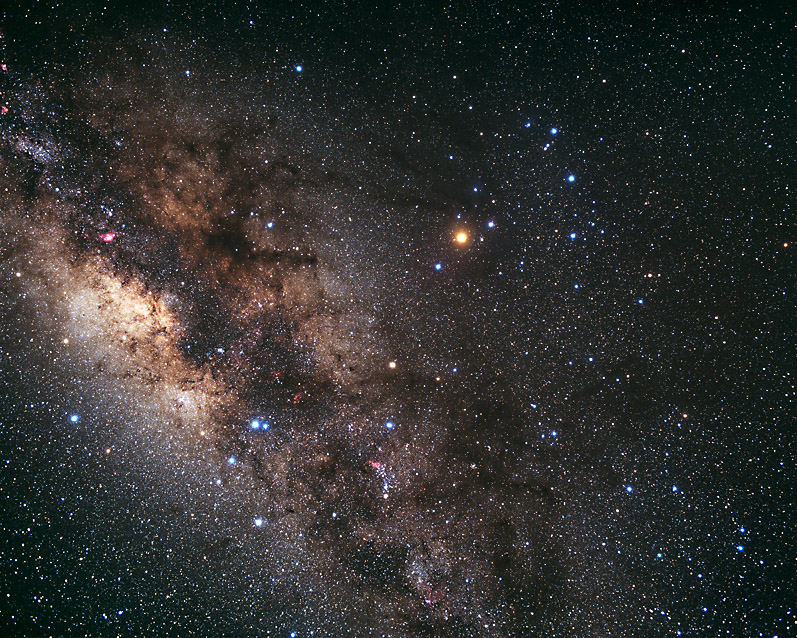
Shaula and Lesath throughout the year.
In the Northern Hemisphere, Scorpius is highest in the evening sky and is therefore thought of as a summer constellation. And in the Southern Hemisphere, it’s considered a winter constellation.
For both hemispheres, Scorpius and its stinger stars are highest in the sky around midnight local time in mid-June. Then by mid-July, Lesath and Shaula are at their highest in the sky around 10 p.m. When mid-August arrives, they are highest in the sky around 8 p.m. And by mid-September, 6 p.m. Remember, the time will vary by up to an hour, depending on how far east or west you are in your time zone.
Science of Shaula and Lesath.
Although these two stars look like a close-knit pair, they’re far apart in space. Shaula is about 571 light-years distant, whereas Lesath is some 576 light-years away. Like all individual stars we see in our night sky, these two are members of our Milky Way galaxy.
Shaula, also known as Lambda Scorpii, is a triple system. The largest star, which has a blue-white color, is about nine times the sun’s diameter and 14 times the sun’s mass. It is a Beta Cephei variable star, a class of stars characterized by rapid but small variations in brightness. There’s another blue-white star in that system. It’s over 10 times the sun’s mass and almost five times its diameter. The third object in the system is what’s known as a pre-main sequence star, an object that has enough mass from the surrounding dust and gas to become a star. But it has not started nuclear fusion at its core, which would define it as a star.
Lesath’s other name is Upsilon Scorpii. It is also a hot blue-white star, about 11 times the sun’s mass and six times its diameter.
The Milky Way runs through the stinger
On a dark, moonless night, you can see a glowing band of stars running from Scorpius‘ tail and upward through the Summer Triangle. It’s called the Milky Way, a roadway of stars arcing across the sky from horizon to horizon in northern summer. You are seeing is the edgewise view of our galaxy’s flat disk. The “haze” is really the combined light of millions upon millions of stars.
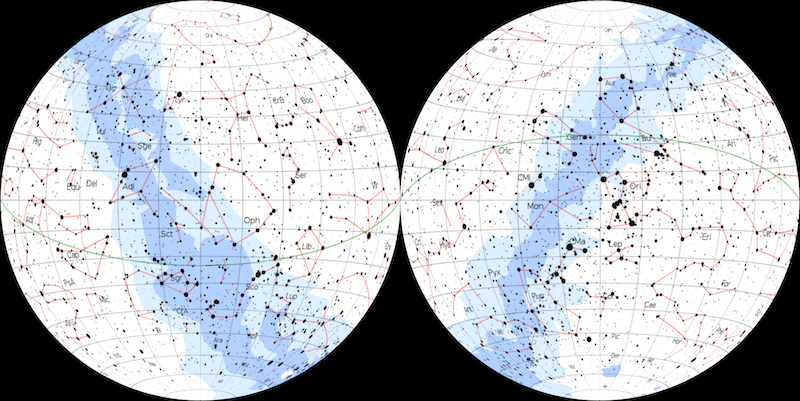
While Earth has an equator, the Milky Way galaxy does, too. The galactic equator runs through Scorpius and also its neighboring constellation to the east – Sagittarius the Archer.
The ecliptic is nearby
And now shift your perspective from our great galaxy to our own local solar system, our sun’s family in space. The ecliptic is our sun’s annual path in front of the background stars, and it also runs through Scorpius and Sagittarius. Check out the star chart below to see the whereabouts of the ecliptic with respect to this constellation.
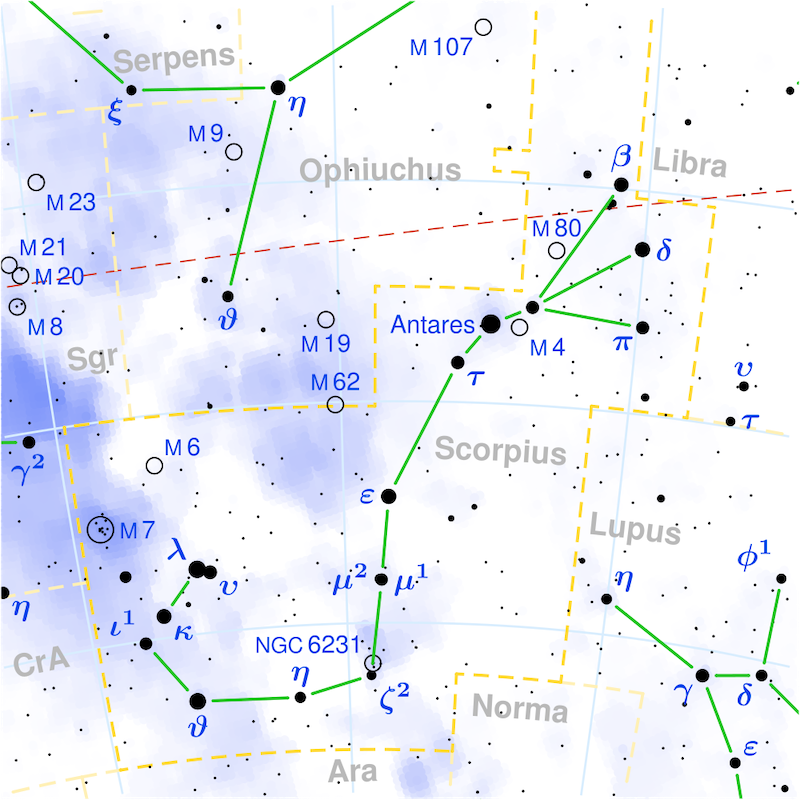

History of the names Shaula and Lesath.
Shaula is an Arabic name meaning the Scorpion’s Stinger. Lesath’s name is less straightforward. According to Paul Kunitach and Tim Smart, authors of “A Dictionary of Modern Star Names,” the name Lesath is the final result of a long and convoluted history, initially derived from a Greek word meaning a (foggy) conglomeration.
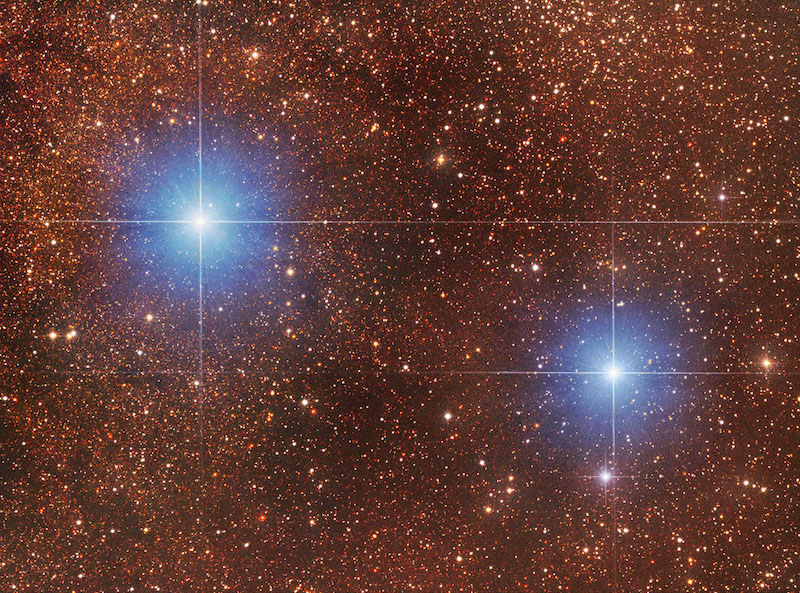
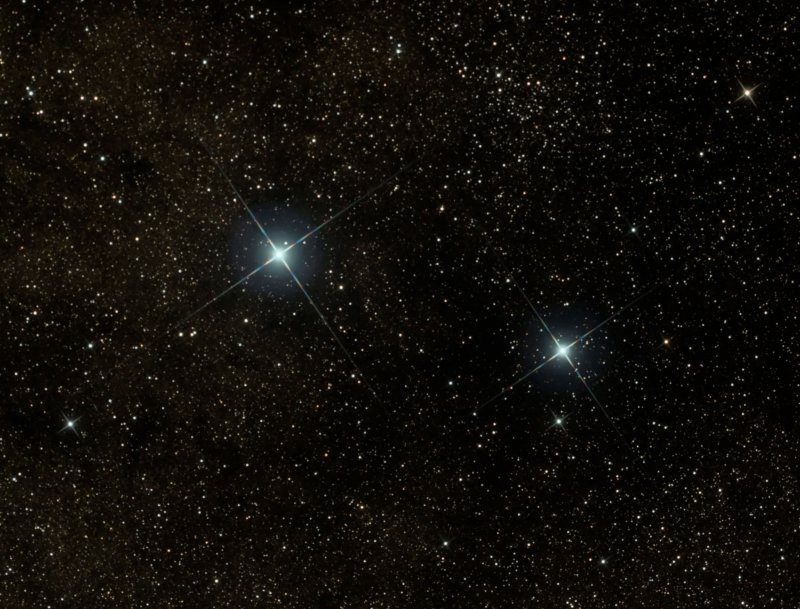
Bottom line: Shaula and Lesath, known as the “stinger stars,” mark the location of the scorpion’s stinger in the zodiacal constellation Scorpius.
The post Meet the Scorpion’s Stinger stars, Shaula and Lesath first appeared on EarthSky.
0 Commentaires